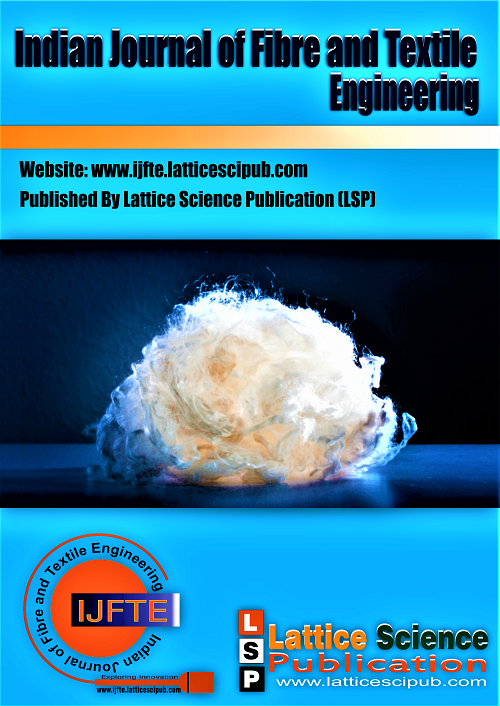Analysis of the Harmony of Fashion Design Combining Balinese Songket and Chinese Style
Main Article Content
Abstract
The combination of several cultures into one beautiful and harmonious fashion work often presents its challenges. In this study, the researcher analyzed the respondents’ reactions to the combination of Balinese culture which is rich in ornamental elements, and Chinese art and culture which is no less legendary. To add aesthetics to this fashion combination, the researcher adds woven ribbons and beads. Woven can be interpreted as uniting several different parts into a harmonious whole. Meanwhile, beads present affirmation, aesthetic enhancers, and motifs in fashion. The respondents obtained in this article are 60 respondents consisting of students, students, employees, housewives, and self-employed. Based on this study, it can be found that 26.9% of the influence of product design, 58.4% of the influence of songket woven fabric, 75.7% the influence of Chinese style, 23.4% the influence of woven ribbon, and 14.7% the influence of beads if assessed individually, in the potential for product purchase. It was also found that these variables will have a joint effect on the potential to purchase the product, which means that this product has achieved harmony between independent and dependent variables.
Downloads
Article Details

This work is licensed under a Creative Commons Attribution-NonCommercial-NoDerivatives 4.0 International License.
How to Cite
References
. W. Suardana et al., Buku Sejarah Tenun Gianyar. Denpasar: Disperindag Kabupaten Gianyar, 2019. ISBN-13 (15), 978-623-92503-4-8. https://omp.isi-dps.ac.id/index.php/NKMEP/catalog/book/14
B. Lucianto et al., “Pengembangan Motif Tekstil Kain Tenun Endek Dengan Pengaruh Budaya Bali,” 2021. https://journal.uc.ac.id/index.php/FOLIO/article/view/3475
V. V. Mujaddidah and O. D. Wahyurini, “Perancangan Buku Visual Tenun Bali Sebagai Upaya Pelestarian Tenun,” JURNAL SAINS DAN SENI ITS, vol. 5, No.2, 2016. https://www.neliti.com/publications/134298/perancangan-buku-visual-tenun-bali-sebagai-upaya-pelestarian-tenun
I. Kadek Adiana Putra, W. Sauri Peradhayana, and I. Wayan Gede Wardika, “Emasains Jurnal Edukasi Matematika dan Sains Analisis Etnomatematika pada Kain Tenun Bali,” 2022, DOI: https://doi.org/10.5281/zenodo.6415265.
I. G. M. Ramadiartha, “Strategi Pengembangan Industri Tenun Endek Melalui Pendekatan One Village One Product Di Kecamatan Sidemen Kabupaten Karangasem,” Surabaya, 2018. DOI: https://doi.org/10.12962/j23373539.v7i2.36796
S. Fransisca and F. Ui, “Representasi Cina Melalui Qípáo (旗袍), Pakaian Wanita Tradisional Cina,” 2008. https://lib.ui.ac.id/file?file=digital/2016-11/126993-S12942-Elsa%20Silvana%20Fransisca.pdf
K. B. Dar, “Empress Dowager Cixi: The Woman Who Ruled China from Behind the Curtain, 1862-1874,” SEJARAH: Journal of the Department of History, 2021. DOI: https://doi.org/10.22452/sejarah.vol30no1.1
D. Gumulya and N. Octavia, “Kajian Akulturasi Budaya Pada Busana Wanita Cina Peranakan,” Journal of Art, Design, Art Education And Culture Studies (JADECS), vol. 2 No. 1, 2017. e-ISSN 2088-4419, https://journal2.um.ac.id/index.php/dart/article/view/1011
A. Dewi, S. Annisa, E. Suwasana, A. Kesejahteraan, S. Ibu, and K. Semarang, “Penerapan Sulam Pita Dan Anyaman Sebagai Hiasan Pada Busana,” Garina, vol. 15 no1, 2023. DOI: https://doi.org/10.69697/garina.v15i1.25
M. Tocharman, “Melestarikan Budaya Kriya Anyam,” 2009. http://file.upi.edu/Direktori/FPSD/JUR._PEND._SENI_RUPA/194811251974121-MAMAN_TOCHARMAN/melestarikan_anyam_file18.pdf
M. D. Restyawati and L. Hidayati, “Penerapan Aplikasi Payet & Akrilik Pada Busana Pesta Malam Sebagai Sumber Ide Star Night,” 2020. [Online]. DOI: https://doi.org/10.26740/baju.v1n1.p73-81
A. Agustina et al., “Maharani: Koleksi Rancangan Busana Terinspirasi Dari Permaisuri Cixi Dinasti Qing,” Jurnal Desain – Kajian Penelitian Bidang Desain, vol. 2, Nomor: 2, 2022. https://journal.interstudi.edu/index.php/journaldesain/article/view/1747
R. Putri Amanda, D. Arifiana, and P. Kesejahteraan Keluarga, “PEMBUATAN EVENING GOWN DENGAN HIASAN PAYET,” Style: Journal of Fashion Design, vol. II, 2023. DOI: http://dx.doi.org/10.26887/style.v2i2.3831
F. Fitri et al., “Aplikasi Bordir dan Payet pada Evening Gown dengan Gaya Karakter Dame Gothel,” 2024. [Online]. DOI: https://doi.org/10.37985/jer.v5i2.1086
G. suartini Vera, I. G. Sudirtha, and M. D. Angendari, “Penerapan Hiasan Payet Pada Busana Pesta Berbahan Batik Motif Merak Abyorhokokai,” Jurnal BOSAPARIS: Pendidikan Kesejahteraan Keluarga, vol. 12, no. 3, pp. 88–96, Dec. 2021, DOI: https://doi.org/10.23887/jppkk.v12i3.37470.
O. Fitriana and R. Dewi, “Aplikasi Payet Sebagai Hiasan Pada Modifikasi Busanapengantin Wanita Aceh,” Prosiding PTBB UNY, vol. 15, 2020. https://journal.uny.ac.id/index.php/ptbb/article/view/36474
Faried, A. I., & Sembiring, R. (2020). Creative Economy Potential through Typical Ulos Fabric Small Industries to Promote the Economy of Lumban Suhi-Suhi Village, Toruan Samosir Regency. In International Journal of Management and Humanities (Vol. 4, Issue 5, pp. 116–122). DOI: https://doi.org/10.35940/ijmh.e0550.014520
Tari, S., & Athalye, Dr. A. (2023). Valorising Desizing Textile Effluent. In Indian Journal of Fibre and Textile Engineering (Vol. 3, Issue 2, pp. 7–12). DOI: https://doi.org/10.54105/ijfte.b2408.113223





